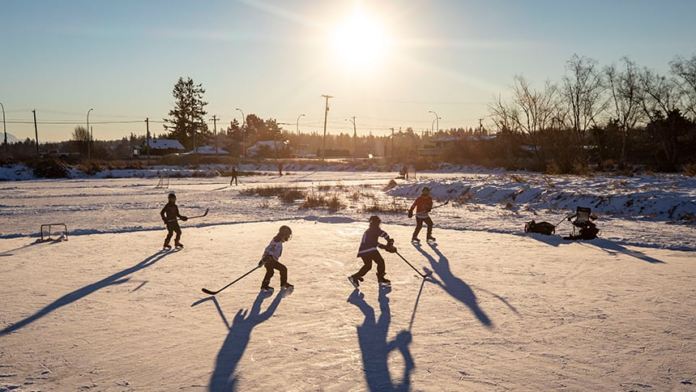Winter solstice takes place on Dec. 21
⭐️HERE’S WHAT YOU NEED TO KNOW⭐️
- Winter solstice occurs this year on Dec. 21 at 4:19 a.m. ET.
- You can see your longest shadow on the winter solstice.
- Be a scientist and get a pen, notepad and measuring tape to record your shadow.
- Countries along the Tropic of Capricorn do not have any shadows on the winter solstice.
- Keep reading to find out which place on Earth has 24 hours of darkness. ⬇️⬇️⬇️
If you ever had dreams of being a scientist, you’ll get your chance to act like one on the winter solstice.
That’s the day you can record your longest shadow ever!
No high-tech equipment is needed for this experiment — just a pen, notebook, tape measure, a friend and a sunny day.
The winter solstice, or as astronomers like to say, the December solstice, takes place this year on Dec. 21 at 4:19 a.m. ET in the Northern Hemisphere.
The Northern Hemisphere is everything north of the equator.
For more on the science about the winter solstice, click on the video, then keep reading to learn how to measure your longest shadow.
The shadow experiment
Jennie King, who is a manager of educator programs at Science World in Vancouver, British Columbia, told CBC Kids News that the best time to record your longest shadow on that day is around noon.
King recommended finding an open area outdoors that gets a lot of sunlight.
All you have to do is stand still in one spot, then ask a friend to record the length of your shadow with the measuring tape.
“Because the sun is going to be so low in the sky on the winter solstice, you’ll notice that your shadow is quite long,” King told CBC Kids News.
People will see their longest shadows of the year on the winter solstice. (Image credit: Alex Linch/Shutterstock)
King suggested recording what you see on that day: Write the date, time, location and the length of your shadow in your notebook.
You can measure shadows of some outdoor objects, like a fire hydrant or a stop sign and add those to your notes.
Heidi White, an astronomer with the University of Montreal, in Quebec, said kids can continue to do this experiment a few months after the winter solstice at the same location and time of day.
That’s because your shadow will become shorter in length, compared to the day you recorded it on the winter solstice.
“You’ll be able to see your numbers changing. It’s an opportunity for kids to be scientists,” said White.
What happens if it’s cloudy? Then what?
If it ends up being a cloudy day on the winter solstice, you can still do the experiment when the sun comes out, or the next day.
White said the weather can “be a little bit frustrating. Try the next day, try a couple days after that. ”
That’s because the winter solstice is more of a gradual event compared to a solar eclipse, for example. You can measure your shadow a day or two later and still experience it.
White said it’s about the slow-moving change in the “length of the shadow throughout the year.”
Winter solstice fun facts
Did you know there are some places on Earth that won’t see any shadows at all on the December solstice?
King said people who live along the Tropic of Capricorn — an imaginary line south of the equator — will experience no shadows at all for a short period.
Some of those countries include Madagascar, Australia, Chile, Argentina, Paraguay and Brazil.

(Graphic design by Philip Street/CBC)
It’s called “solar noon” and it happens around 12 p.m., when the sun reaches its highest point in the sky all day.
Another fun fact about the winter solstice is that areas below the Antarctic Circle will see 24 hours of sunlight that day.
Meanwhile at the opposite end of the Earth, which is north of the Arctic Circle, there will be 24 hours of darkness.
If you think an entire day of darkness is a lot, then you wouldn’t want to be on the planet Uranus during its winter solstice.
Uranus has a 98-degree tilt, which means it’s on its side.
That planet is also further away from the sun than Earth.
Since Uranus “has a really extreme tilt to its axis and a really long orbit, it makes the seasons and periods of constant day time and night time really long,” said White.
That works out to around 21 years of winter and darkness!
Check out these other videos:
Have more questions? Want to tell us how we’re doing? Use the “send us feedback” link below. ⬇️⬇️⬇️
TOP IMAGE CREDIT: Ben Nelms/CBC, graphic design by Philip Street/CBC

